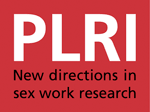online pdf
The Chinese government uses the traditional strategy of implementing strict laws regarding sex work with the intention of preventing risk behaviours. Cambodia is internationally recognized for having successfully reduced its HIV prevalence among the general population from about 3% in 1997 to 0.7% in 2009. Sex work played a significant role in the spread of the HIV epidemic during the nineties. Since 1999, HIV prevalence has declined among direct and indirect sex workers, although levels remain high. The 100% condom use promotion strategy has been credited for having played a major role in the decline of HIV. This discussion paper

